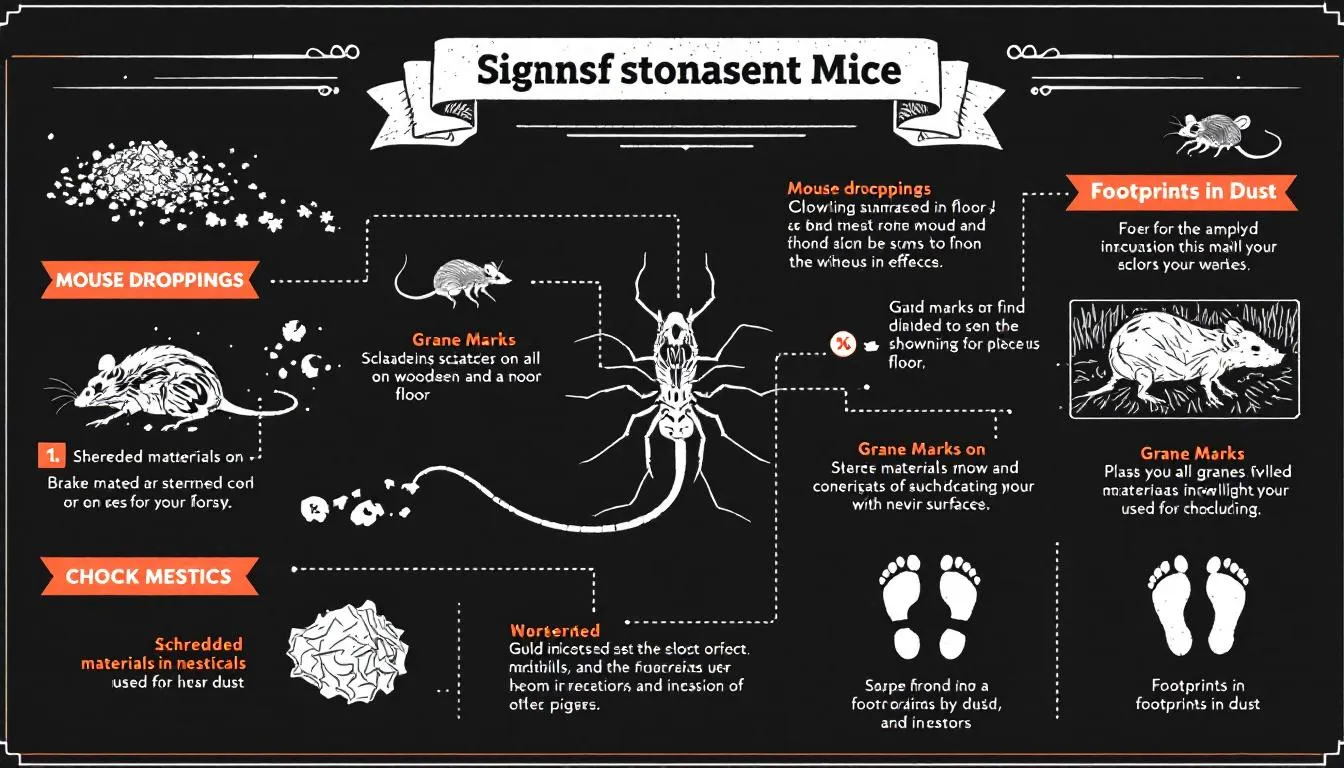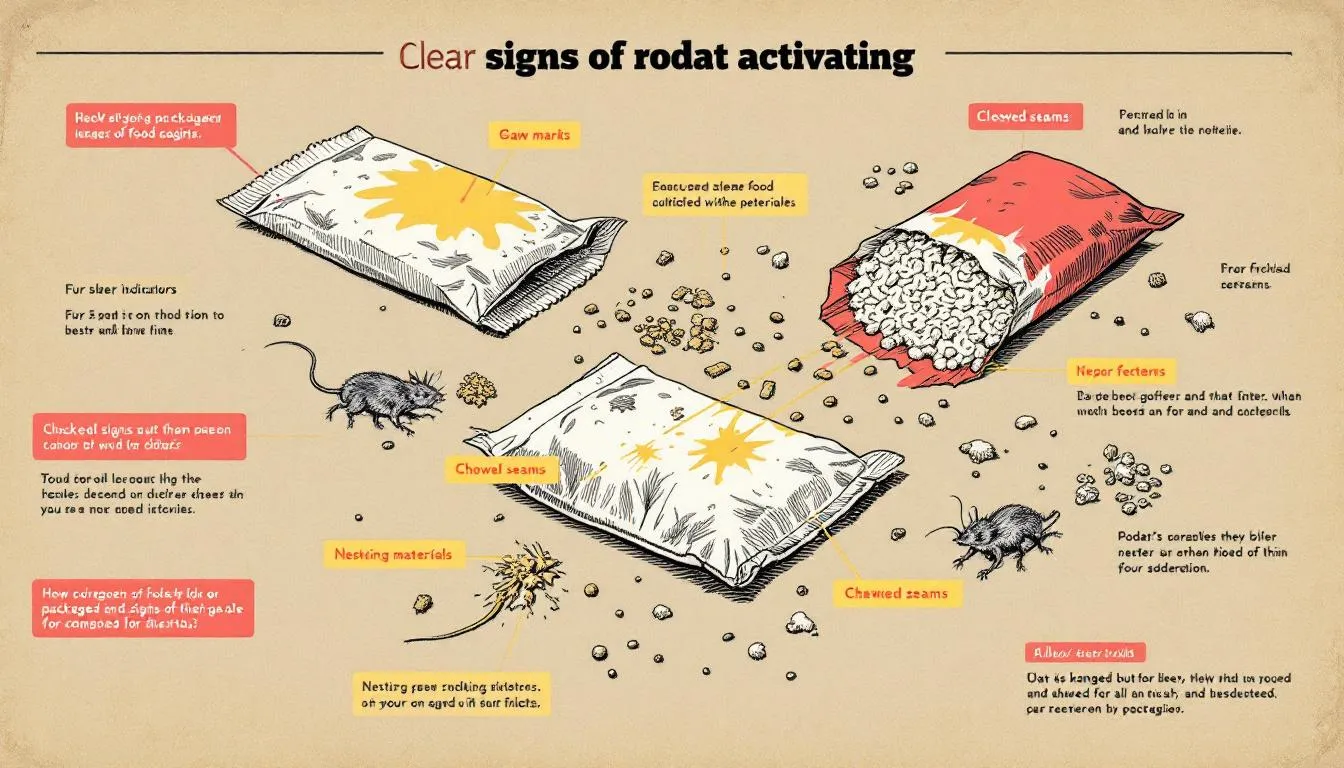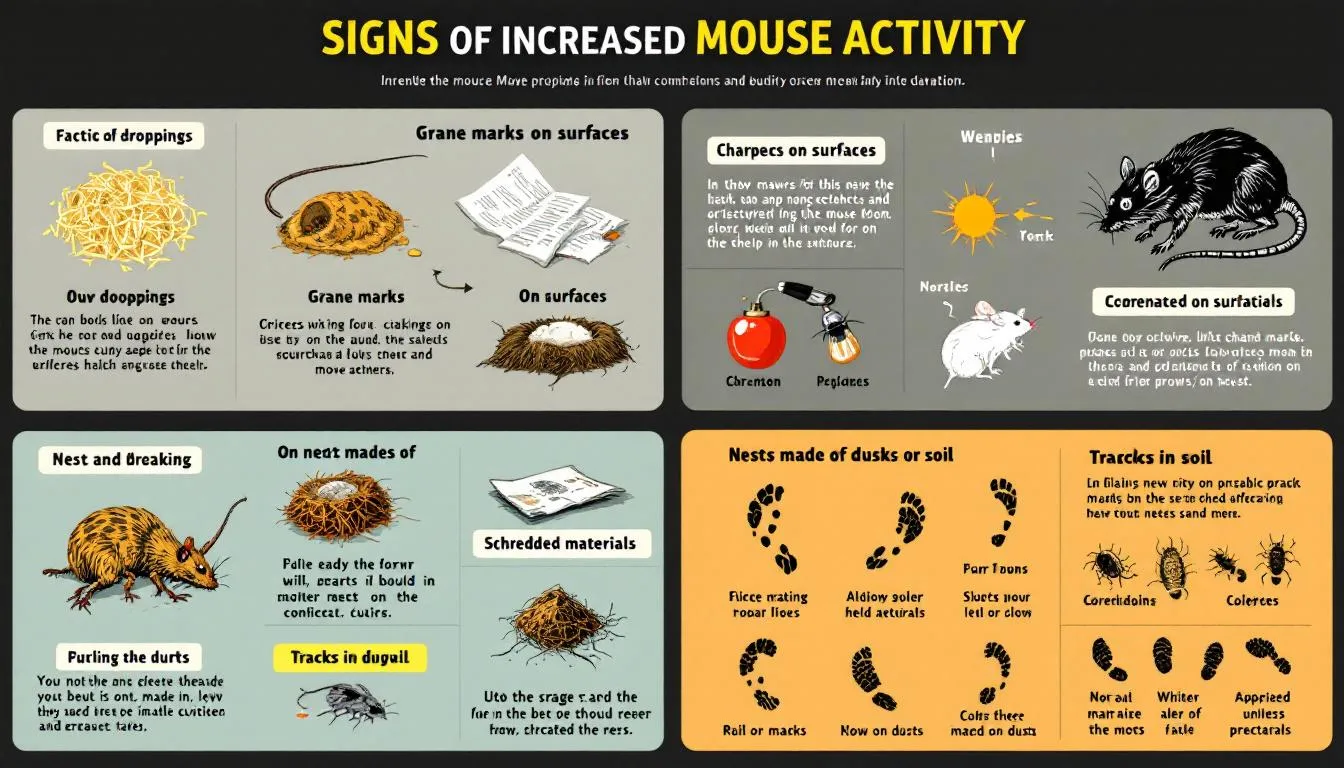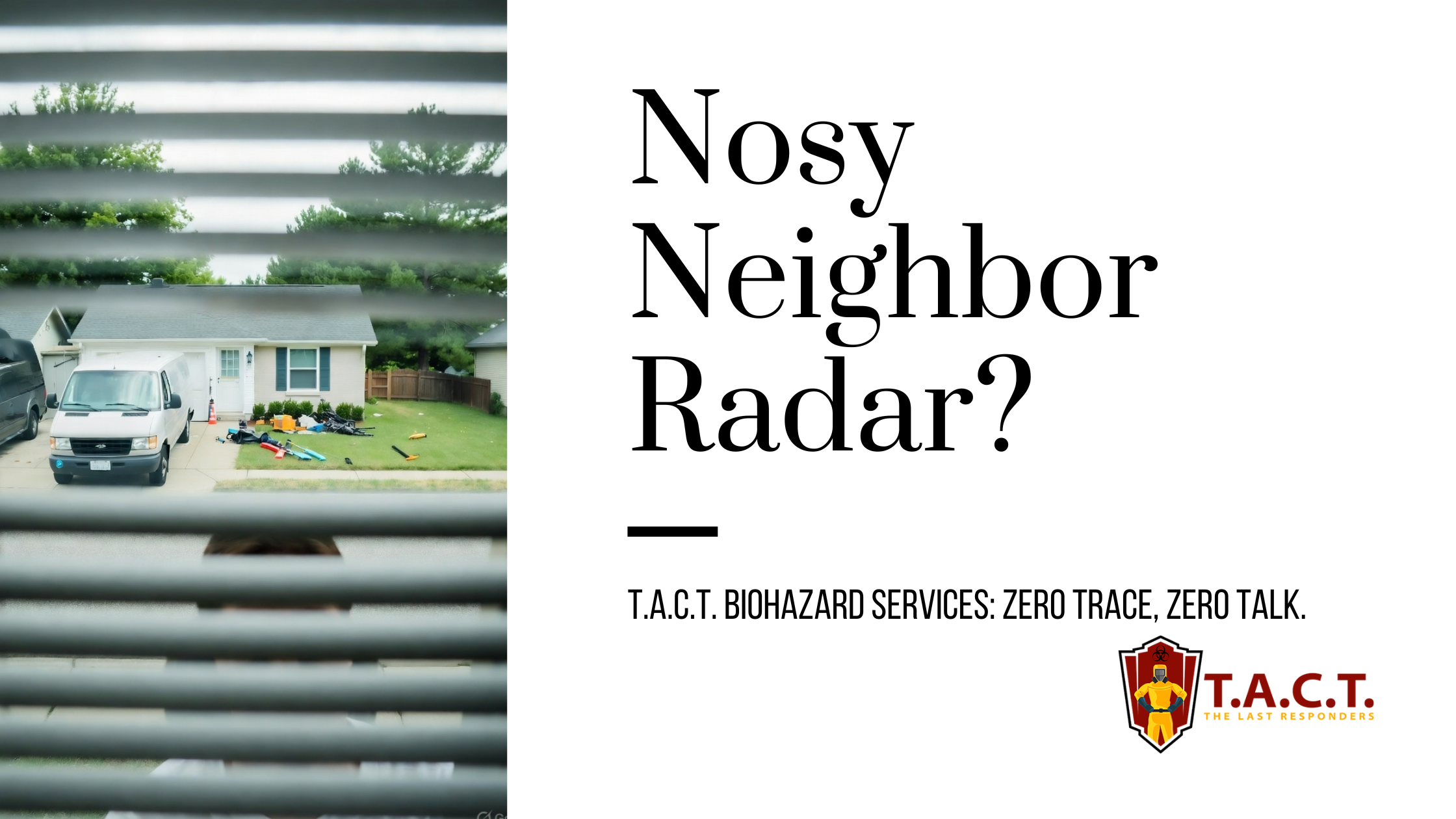Sign of Bad Mice Infestation

Top Signs of Bad Mice Infestation You Shouldn't Ignore
Spotting the signs of a bad mice infestation early is crucial. This guide outlines the key indicators of a severe mouse problem, including the signs of bad mice infestation, so you can take prompt action.
Key Takeaways
Unusual daytime activity of mice indicates a severe infestation and necessitates immediate action.
Mouse droppings, persistent scratching noises, and strong ammonia odors are key signs of infestation that should not be ignored.
Mice pose serious health risks through disease transmission and contamination, making swift pest control essential.
Unusual Daytime Activity
Mice are primarily nocturnal creatures, meaning they hide during the day and emerge at night to forage for food and water. Spotting mice during the day is an early sign of a severe infestation. This unusual activity suggests that their population has grown so large that some mice are forced to venture out during the day due to overcrowding and competition for limited food sources.
Mice scurrying around in broad daylight clearly indicate a severe infestation needing immediate attention. Ignoring this small problem can lead to more damage and a major problem with a bad mouse infestation and an escalating mouse problem.
Mouse Droppings Everywhere

One of the most unmistakable signs of a mouse infestation is the presence of mice droppings. Key points about mouse droppings include:
They typically measure between 3-8mm.
They can be found in areas where mice are active, such as kitchen cabinets, pantries, and along baseboards.
They indicate both the presence of mice and the severity of the infestation.
A large quantity of droppings signals a severe infestation needing immediate action.
Fresh droppings indicate ongoing activity and possibly a growing population. Finding fresh droppings means you should address the issue promptly. Mice carry diseases that can contaminate your food and living spaces, posing serious health risks to you and your family.
In addition to droppings, you may notice other signs such as holes chewed in food packaging or small mounds of nesting materials. These signs, combined with the presence of droppings, paint a clear picture of a major mouse problem in your home. Rodent droppings can also attract other pests, compounding the issues you need to tackle.
To manage a mouse infestation, consider the following steps:
Thoroughly inspect your home for entry points where mice might be getting in.
Look for tiny holes chewed in walls or near the foundation.
Seal entry points to prevent more mice from entering and worsening the infestation.
Use glue traps and other pest control measures to help manage and reduce the mouse population.
Persistent Scratching Noises
Another telltale sign of a mouse infestation is the persistent scratching noises coming from your walls, floors, or ceilings. These sounds often indicate that mice are actively nesting or moving around within your home’s structure. Continuous scratching is unsettling and clearly indicates a significant mouse problem.
You may also hear chewing or small footsteps beyond scratching. These sounds are often more noticeable during quiet night hours, which can be considered telltale signs.
Pets might display unusual behaviors like barking, whining, or pawing at areas with rodents. Such animal behaviors can help pinpoint active areas and guide targeted actions to prevent rodent infestations and address the trap infestation.
Strong Ammonia Odor
A strong ammonia-like odor indicates a severe mouse infestation. This smell comes from mouse urine, which becomes more pronounced as it dries. This odor suggests a large mouse population since many mice are needed to produce a noticeable musky odors.
The ammonia scent is often most noticeable in confined areas where mice frequently traverse, such as behind appliances, in basements, or in attics. Urine stains, along with the smell, are another clear indicator of an infestation.
Detecting this odor means you should act quickly to address the issue and prevent further contamination.
Damaged Food Packaging

Damaged food packaging indicates a mouse infestation. Signs include:
Mice chewing through food packages to access the contents inside
Holes chewed in food packaging
Tampered food containers These clearly indicate mice in your home.
You might also find strange food stockpiles around your home. Mice hoard food and store it in hidden areas to stay hidden for a steady supply. Discovering these stockpiles strongly indicates active foraging and nest within your home.
Protect your food by storing it in airtight, sealed containers that mice can’t penetrate.
Shredded Nesting Materials
Shredded nesting materials are another sign of a mouse infestation. Mice use shredded paper, fabric, and insulation to create nests. These nests are often hidden in secluded areas like behind walls, in attics, or under furniture.
Dried plant matter is used by mice to build their nests, incorporating nesting material like paper and fabric. These materials in small mounds around your home are early warning signs of a developing infestation. Promptly addressing the issue can prevent it from worsening.
Grease Marks and Tracks
Grease marks and tracks commonly indicate mouse activity. As mice squeeze through narrow spaces, they leave behind greasy marks from their fur. These marks appear as dark streaks or smudges along walls and baseboards where mice frequently travel.
You may also find visible tracks in dusty areas of your house. These tracks indicate regular paths and can help identify their routes.
Grease marks and tracks together confirm an ongoing mouse issue needing attention.
Odd Pet Behavior
Pets can serve as an early warning system for a mouse infestation. Dogs and cats have a keen sense of smell and intuition, alerting them to mice. The first sign of pets sniffing, scratching at walls or floors, or staring intently at spots, could indicate hidden mice.
Such behaviors should prompt an inspection of the areas your pets focus on. Noting your pets’ actions can help discover potential mouse problems early and address them before they escalate.
Health Risks and Contamination
Mice carry diseases like hantavirus and leptospirosis, posing serious health risks to humans. Rodent waste can contaminate food and surfaces, increasing the risk of illness from consuming contaminated food. Droppings near food sources suggest high mouse activity, indicating a serious infestation.
Infected fleas, ticks, and mites from rodents can spread diseases to humans, increasing health risks. These pests transfer diseases through bites or by contaminating food and water. Health risks associated with a mouse infestation, rat or mouse infestation, and rodent infestations necessitate prompt and effective action.
Beyond disease transmission, mice can cause structural damage by gnawing on wires, increasing fire risk. Swift action to control the mouse population and enhance disease control can protect your family’s health and prevent costly property damage.
Gnaw Marks on Household Items
Mice chew on hard materials to manage their growing teeth, resulting in noticeable gnaw marks on household items. Commonly affected items include electrical wires, plastic containers, and wooden furniture. Identifying these gnaw marks early helps gauge infestation severity and assess potential home damage.
Gnaw marks are more than a nuisance; they pose serious dangers like increased fire risk from chewed wires. Finding gnaw marks on household items necessitates immediate action to address the infestation and prevent further damage.
Increased Sightings and Dead Mice

Dead mice within your home clearly indicate a serious rodent problem. A dead mouse in various locations, especially near food sources, indicates a critical infestation requiring urgent action.
Increased daytime sightings of live mice also suggest a severe infestation. This suggests the house mouse population has grown so large they struggle to find sufficient shelter and food, forcing house mice to where mice tend to be in the open, making them unwelcome guests.
An increase in mouse sightings means you should address the issue promptly to prevent further spread and health risks.
Summary
In summary, recognizing the signs of a mouse infestation early can help you take swift action to protect your home and health. Unusual daytime activity, mouse droppings, persistent scratching noises, strong ammonia odors, damaged food packaging, shredded nesting materials, grease marks, odd pet behavior, health risks, gnaw marks, and increased sightings of mice are all clear indicators of a severe infestation.
By being vigilant and addressing these signs promptly, you can prevent a small mouse problem from turning into a larger issue. Remember, the key to effective pest control is early detection and intervention. Don’t ignore these signs—take action today to safeguard your home and family.
Frequently Asked Questions
What is the first sign of a mouse infestation?
The first sign of a mouse infestation is typically the presence of mouse droppings, which you may find in different areas of your home. Promptly addressing this indication can help prevent further issues.
Why do I hear scratching noises in my walls at night?
Hearing scratching noises in your walls at night likely suggests that mice are nesting or moving about in your home's structure. It's important to address this issue promptly to prevent further infestations.
What does a strong ammonia odor in my home indicate?
A strong ammonia odor in your home often indicates the presence of mouse urine, suggesting a significant mouse infestation that needs immediate attention. Addressing this issue promptly is crucial for maintaining a safe living environment.
How can I tell if my pets have detected mice in my home?
If your pets are sniffing around, scratching at walls or floors, or staring intently at specific areas, it's likely they have detected mice in your home. Observing these behaviors can be a clear indicator of their awareness of rodents.
What health risks are associated with a mouse infestation?
A mouse infestation poses significant health risks, including the transmission of diseases such as hantavirus and leptospirosis, which can contaminate food and surfaces. Taking swift action to eliminate mice is essential to safeguard your health and well-being.
Latest news

Bio Cleaning Services
Read More
Nosy neighbors peeking? T.A.C.T. North Atlanta offers discreet biohazard remediation for rodent infestations, mold, hoarding, and more. Unmarked vehicles, quiet experts, full privacy—24/7 service at 470-781-4775.
Read More
